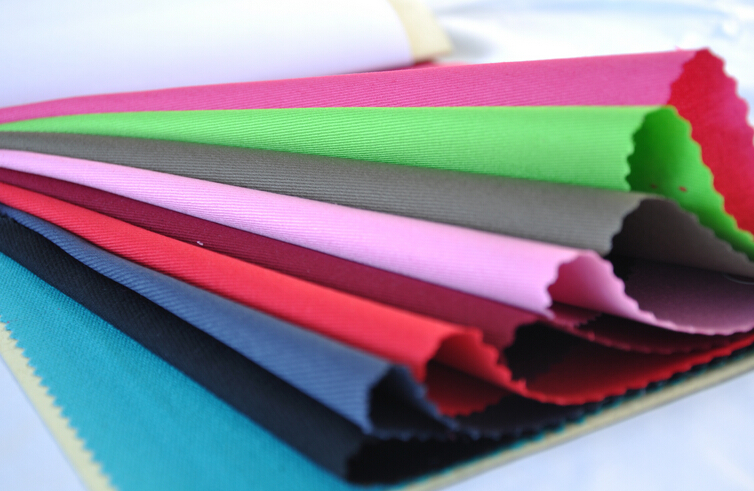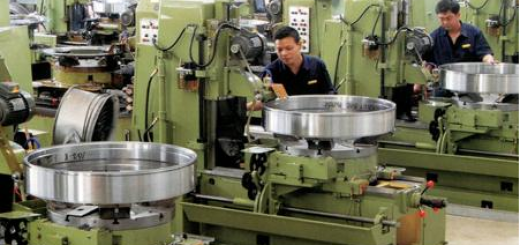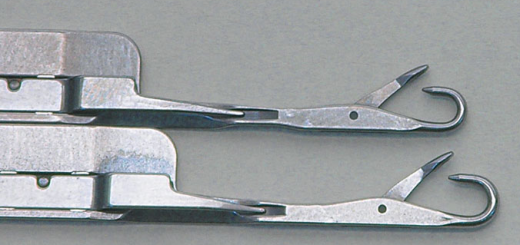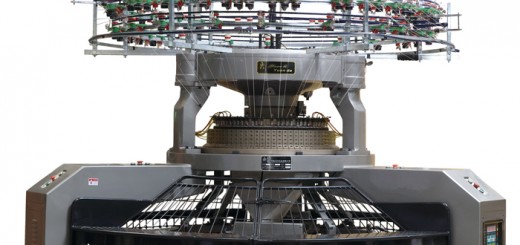No. 1: The impact from rod wax and specific yarn
Experts’ idea: as the various qualities of gray fabric and slurry used by each weaving factory, so there may be cloth defects, serious whiteness, heavy cambric cloth shade and other problems. Especially some small textile mill put paraffin in gray fabric, so there will be serious rod wax during production, leading to much hickie and defects on the stained cloth surface (especially the blue ones). So, before production, we should firstly examine the gray fabric, and if there is too much wax, we should remove the wax and then singeing (the effect of wax removal is poor after heating. If it is found that was can be widened, you can use soften agent and then mercerize. If you
find wax before dyeing, you can first use low-temperature dewaxing agent and dye after drying. Sometimes when dyeing dark color on cotton fabric, there may be many white spots, which have fluorescence under ultraviolet light. This is due to specific yarn. Therefore, if you know the fabric has specific yarn , you should bake and then bleach it. And if you find specific yarn dyed before dyeing, you should bake before dye. Baking it after production will have an impact on its colors.
No. 2: The formation and prevention of bad air during dyeing
Experts’ ideas: during production, we usually have some gorgeous colors such as orange and light pink, and we also select fluorescent materials. But after while we may find black gas on the cloth face and makes it looks colored, it is called bad air.
The appearance of bad air is usually the following situations:
1) Unclean singeing. When the singeing is not completed well, there will be a layer of short fluff. The infrared ray of padding machine is too close to cloth, the machine operates slowly and the ray will burnt the fluff, so the bad air comes. It is not obvious when producing dark color cloth, but light one is.
2) Improper material. If use fluorescent material for scattering in production, and the dark active material, it can also cause a layer of black dirty air cloth due to consistent light. The polyester in polyester and cotton fabric is brighter than cotton, particularly gorgeous color, polyester and cotton is easy to cause color brightness, so when producing gorgeous color should firstly strengthen the processing of cotton, guarantee the whiteness of fabric, polyester and cotton hue, thus preventing gas produced.
3) Inappropriate dyeing process. For example, choosing scattered fluorescent red, pink and purple to produce light pink. If dyeing temperature is low, cloth cover will be either dark and colored, and if it is high, dyeing cloth will be bright and plump, because of high temperature disperse fluorescent pink can fully reflect beautiful hair fluorescence effect, so should select according to the dye, formulate reasonable production technology, to produce colored cloth.
No. 3: The reasons and prevention of rotten cotton spots and holes
Experts’ idea: Rotten cotton macula generally formed in the process of oxygen bleaching. When bleaching, floating liquid contains impurities such as rust adhering to fabric surface. Under the effect of metal ions, the decomposition of hydrogen peroxide will produce a large amount of heat damage and cotton fiber, damaged fiber is piled up for a long time under high temperature and will form a rotten cotton spots or holes. In addition, if the burning of singeing cloth adhering to fabric surface, there will be a burnt point, oxygen bleaching here will form a rotten cotton spot due to the intense reaction burns hydrogen peroxide.
Cotton spot has great influence on dyeing quality. When dyeing bright color, rotten cotton spot will form bright spot; Dark color, rotten cotton spot will become dark spots. For polyester or cotton fabric, the size of the rotten cotton spot depends on the color difference of polyester fiber and cotton fiber. Its hue will be close to splash, while the hue difference is big, can accentuate spots. So if we find rotten cotton spot formation of the plaques, we should adjust the terylene hue, lighten the terylene fabric luster difference as far as possible to reduce rotten cotton spot on the quality of the cloth products. If you found rotten cotton when dyeing production spot should inform practice workers for early treatment, so as to reduce the loss at the greatest extent, and adjust the dyeing recipe reducing rotten cotton spot rate.
Here are some measures to choose to prevent rotten cotton spot:
The bleaching liquid containers should be clean and not contain some metal impurities. The soft water being used should also be clean and cannot be rusty tap secondary pollution. In addition, cloth for oxygen bleaching also cannot have a rusty spot, and the rusty spot should be dealt with before oxygen bleaching. Oxygen bleaching process is safe, reliable forbearance, quantitative and reasonable auxiliaries (stabilizing agent, penetrating agent, chelating dispersant, sodium silicate, etc.) in order to prevent the intense reaction to form hydrogen peroxide hole or rotten cotton spot. Production of hydrogen peroxide content in thin fabric should appropriately lower. During oxygen bleaching should use wet cloth, in order to prevent rust or burn some intense reaction with hydrogen peroxide. Wet the cloth can also make up the fabric permeability due to process fluctuations and whiteness.
When the quality of fabric is poor, or the neps and bad cotton are much, customer will generally require handling these. During seuding machine production, due to factors such as exhaust brush roller, cloth will be different degree of adhesion to interlock. If brush box processing incomplete when the singeing, interlock is piling up and was taken to the crater, the interlock ash on cloth will make the cloth produces burning point, form black macula. Therefore, we should pay attention in the production of nep fabric: the effect of seuding machine of exhausting brush is better, and should not make cotton flying around and stick on the cloth; pay attention to the cleaning brush box when singeing, put an end to produce cotton to crater formed interlock ashes, singeing off, and use wet cloth to prevent rotten cotton spot.





